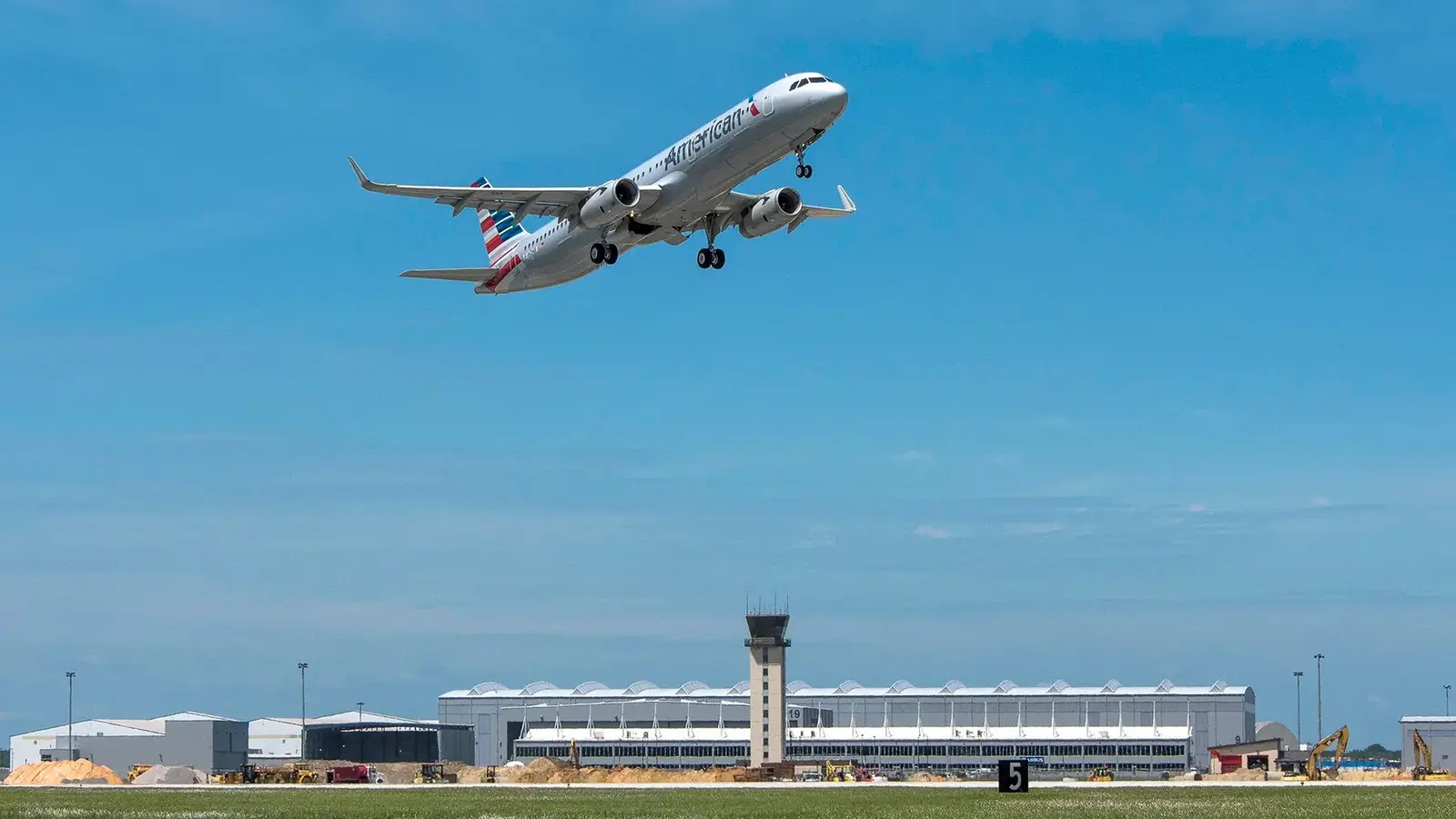
Airbus pioneered the use of fly-by-wire (FBW) systems in commercial aviation with the launch of its successful Airbus A320 program in the late 1980s. The A320’s fully digital FBW system was a first for a commercial aircraft, removing reliance on traditional mechanical systems to an electrical-based setup that gave computer systems greater input on the aircraft’s movement.
While this approach has proven to be incredibly safe over the decades, regulators were not convinced at first, putting Airbus through its paces when the A320 was undergoing its rigorous certification process. Since the A320, each new Airbus aircraft has enhanced the FBW architecture and their safety record has been immaculate. Other manufacturers have since followed in the European planemaker’s footsteps, integrating digital flight control systems onto their new aircraft.
Airbus Changes The Game With Fly-By-Wire
Prior to the arrival of the A320, commercial aircraft were equipped with conventional mechanical and hydro-mechanical control systems, such as cables and pulleys. While this had been the way since the dawn of the flight age, mechanical systems had their limitations. They were vulnerable to wear and corrosion over time, often had little or no redundancy, and they were also heavier than a digitalized system, adding weight to the aircraft and making it more maintenance-intensive.
They also offered no envelope protection, which increased the likelihood of pilot errors leading to accidents. When Airbus developed its FBW approach, it tackled all of these problems effectively to deliver a safer and more reliable flight control system. Pilots also have a less task-intensive job on their hands in the cockpit during flight, leaving them free to focus on situational awareness with automated functions continuously at work in the background.
Perhaps the most significant change was the shifting of the degree of authority to computer systems, which were strictly governed by envelope protections and laws. This prevented pilots from accidentally overstressing the aircraft and going beyond its aerodynamic limits. As a result, accidents are far less likely to happen, and in the years since FBW systems have become the norm, the technology has prevented multiple catastrophes from occurring.
How Airbus Developed Fly-By-Wire
Airbus had integrated some limited fly-by-wire features when it developed the Airbus A310, primarily electrical signaling across some systems, but it was not close to a full fly-by-wire aircraft. The A310 entered service in the early 1980s and gave Airbus a head start on developing a more sophisticated and complete system for its upcoming narrowbody, the A320.
The technology was already a feature on military jets, most notably the F-16, and Concorde used an analog system that Airbus drew heavy inspiration from. But in terms of a fully digital system, this had never been done on a commercial aircraft before. Airbus replaced yokes with side-sticks that communicated via electronic signals and installed a total of five different flight control computers for added redundancy. The aircraft would run on three different control laws – Normal, Alternate and Direct – which would give different levels of envelope protection versus direct pilot authority.
It was also wired with distinct electrical channels and hydraulic systems to further bolster its safety. These different wiring routings were designed to protect the aircraft’s systems in the event of a fire or break. Airbus emphasized the presence of multiple points of redundancy, a core principle that helped it win over regulators when it came to certification.
The Most Scrutinized Aircraft Of Its Era
Because of the novelty of Airbus’ tech on the A320, regulators subjected the aircraft to their most stringent certification and testing standards. European authorities and the Federal Aviation Administration (FAA) examined whether the aircraft’s digital flight control systems were safe, while also requiring Airbus to demonstrate every backup and reversion mode.
Much of the early testing took place using Airbus’ “Iron Bird”, its giant test rig used to examine its electrics, hydraulics and flight controls.
“In the years leading up to a new aircraft’s first flight, changes made during the development phase can be tested and validated using this valuable tool. Aircraft components that function well in isolated evaluations may react differently when operating in concert with other systems – a situation the Iron Bird, with its integrated testing of an aircraft’s systems, is ideally suited to identify.”
Once ground-based testing was complete, Airbus progressed to prototype flight testing, which saw test pilots push the A320 to its limits. The company built several flight test airframes for this purpose and ultimately passed the rigorous certification requirements before the A320 entered service in 1988 with Air France. In the decades since, the A320ceo has maintained one of the best safety records of any commercial jet.
Zero Fly-By-Wire Failure Crashes
With almost four decades of digital FBW in commercial aviation, these aircraft have accrued billions of flight hours to prove the technology as extremely safe. In these decades of service, no aircraft has ever crashed due to a direct malfunction of FBW systems, although a few accidents have occurred due to pilot misunderstanding of their aircraft.
For example, the high-profile Air France Flight 296Q A320 crash in 1988 was found to be the result of pilot error, although the captain of that flight insisted that the FBW system was to blame. Another Air France crash in 2009, involving an Airbus A330, occurred after the plane switched to Alternate law and stalled after pilot inputs, a scenario that the computer would have prevented under Normal law.
Aviation safety has improved drastically within the last few decades, with ICAO data showing that accidents have gone from 3.72 accidents per million sectors in 2005 to 1.13 in 2024. Over a rolling five-year average, accidents have decreased from 2.20 per million sectors for the period 2011-2015 to 1.25 for 2020-2024. While there are several factors contributing towards these improvements in safety, aircraft design is one of the cornerstones, and fly-by-wire has played a major role in this.
Continuous Evolution Of Safety
Since the introduction of the A320 in the late 1980s, Airbus has continued to develop the onboard computers across its aircraft to ensure safety improves with each new model. The computers onboard its A330 and A340 range, which entered service less than a decade after the A320, were equipped with faster processors, while the A380 and A350 were the first to have triple-redundant electrical networks.
Airbus also focused on developing more sophisticated flight envelope protections with each new generation, while building on the redundancy principle to buffer the aircraft against critical system failures. This meant its planes could continue to fly safely even if multiple systems failed simultaneously. Modern Airbus systems constantly monitor the plane’s speed, load factors and angle of attack, freeing up pilot workload and preventing unsafe flight conditions automatically.
It was not all plain sailing when developing the computer software. The company famously ran into a problem when developing the A321neo involving an excessive pitch-up attitude at certain stages of flight. Fixing this problem took software rewrites that tweaked the aircraft’s flight controls while in Flare Mode to maintain its envelope protections. This was not too dissimilar to the pitch problem that the Boeing 737 MAX had experienced, although Boeing’s MCAS fix was far more extensive than Airbus’ software changes.
From Innovation To Industry Norm
With the success of the A320 and its digital flight systems, the fly-by-wire concept was soon adopted by other planemakers, most notably Boeing. While it had integrated partial FBW into the Boeing 757 and 767, its first fully digital aircraft was the long-range twinjet 777. Even then, Boeing’s system was not as extensive as Airbus had designed for its planes, still allowing pilots to retain more direct authority and override certain envelope protections if necessary.
In the following decades, other manufacturers like Bombardier and Embraer developed their own FBW systems, incorporating Airbus principles onto smaller regional aircraft. Embraer’s first E-Jet, the E170, was fully digital and marked its entry to service in 2002, featuring dual-redundant computers but with conventional yokes. Bombardier’s CSeries, later renamed the A220 after it was acquired by Airbus, closely followed the Airbus system with side-stick controls and triple-redundant computers.
Today, fly-by-wire is the industry standard and has coincided with a sharp reduction in aviation accidents over the decades. Rates of accidents and fatalities in modern aviation are just a fraction of what they were in the pre-FBW era. Commercial aircraft will likely continue on the path of automation – while some warn against over-ceding flight authority to computers, others in the industry are in favor of single-pilot operations. While there are initiatives to develop fully autonomous urban air taxis, it might be a while before we see autonomous commercial long-haul flights.



